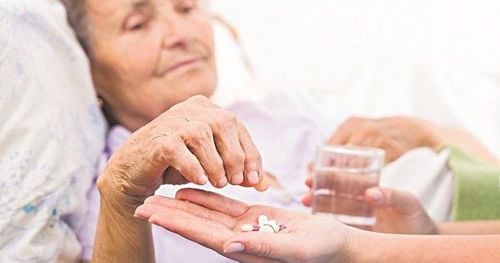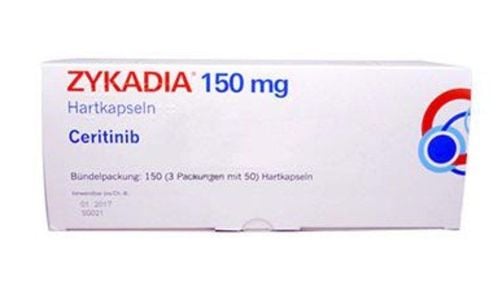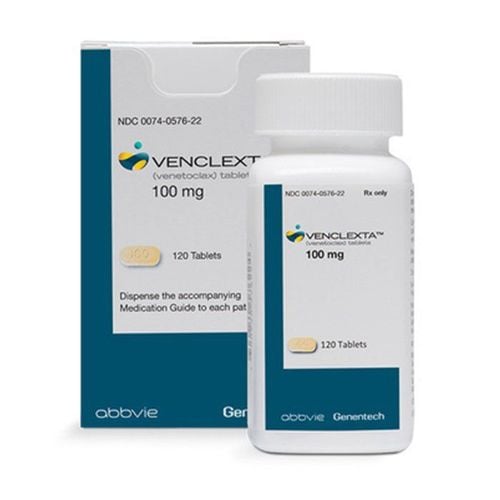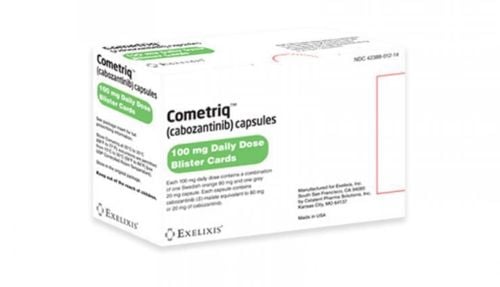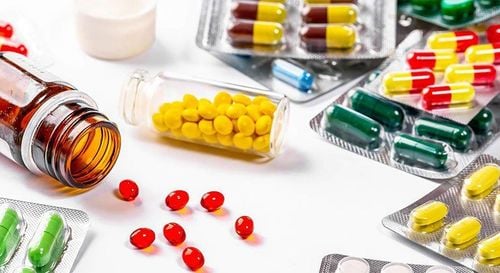This is an automatically translated article.
Etoposide is an active ingredient used in combination with other cancer drugs to treat small cell lung cancer. This is also the main active ingredient in Vepesid. So what is Vepesid used for?
1. What are the uses of Vepesid?
Etoposide is the main active ingredient in Vepesid, which works by blocking the action of an enzyme in cells called topoisomerase, which is essential for cell multiplication and growth. tumor. Cells need the enzyme topoisomerase to keep their DNA in the proper shape when they are dividing. Blocking this enzyme leads to the breakdown of DNA, which leads to the "death" of cancer cells. Vepesid is used to treat small cell lung cancer, the drug is often used in combination with other cancer drugs.2. How to take Vepesid
Vepesid is used by intravenous infusion when it is prepared as a solution for injection or Vepesid can also be used orally in the form of capsules. Vepesid dosage and schedule are determined by the patient's weight, the type of cancer, and the patient's mode of administration. Vepesid can be used alone or in combination with other drugs.
Even when used carefully and correctly by trained personnel, Vepesid can cause burning sensation and pain due to the risk of Vepesid leaking out into the vein at the injection site, lead to severe tissue damage. If the area where Vepesid was injected becomes red, swollen, or painful at any time during or after the injection, notify your doctor immediately.
3. Possible side effects of Vepesid
Patients can apply a number of different methods to control the side effects of Vepesid, these measures will be guided and selected by the doctor to suit each specific patient. The following are some of the most common and important side effects of Vepesid:
3.1. Low white blood cell count White blood cells play a role in fighting infections. During treatment with Vepesid, the white blood cell count may decrease leading to an increased risk of increased infections. It is important that patients taking Vepesid tell their doctor or nurse immediately if there are signs of an infection such as: fever over 38 degrees, sore throat, cold, difficulty breathing, cough, painful urination or other symptoms. slow-healing ulcers.
Some doctor's recommendations to limit infection while taking Carfilzomib :
Wash hands often, including patients, relatives or visitors; Limit going to crowded places or contact with people showing signs of infection (having a cold, fever, cough or living with someone who is showing these symptoms); Do not handle pet waste while being treated with Vepesid; Maintain hygiene at open wounds or skin abrasions; Bathing, body hygiene, dental care regularly; Do not remove corners, cut ingrown fingernails/toenails; Talk to your oncologist before having a dental procedure while taking Vepesid ; Consult your doctor before receiving any vaccine while taking Vepesid. 3.2. Decreased red blood cells, increasing the risk of anemia Red blood cells have the role of transporting oxygen in the blood to supply tissues, so a low number of red blood cells will cause the organs in the body to be deprived of oxygen to function. present as: fatigue, lack of energy. Patients should inform their doctor if there are manifestations of anemia such as shortness of breath, fatigue or chest pain ... during treatment with Vepesid. In some cases, the red blood cell count is too low due to Vepesid, which may require a blood transfusion.
3.3. Thrombocytopenia: Platelets are part of the blood clotting process, so a low platelet count leads to a higher risk of bleeding. Patients taking Vepesid should tell their doctor if they experience bruising or unusual bleeding (bleeding from the nose or teeth, bloody urine, etc.). Platelet transfusion is the treatment if the platelet count is too low while taking Vepesid . Besides, patients should also avoid some activities that can cause bleeding during treatment with Vepesid as follows:
Limit or avoid the use of razors; Avoid playing contact sports that have the potential to cause injury or bleeding; Carfilzomib should not be used concurrently with Aspirin or non-steroidal anti-inflammatory drugs (NSAIDs); Do not use dental floss, toothpicks; Do not brush your teeth with a brush with too stiff bristles. 3.4. Mouth ulcers Some cancer treatments can cause sores or sores in a patient's mouth or throat, so tell your doctor if your mouth, tongue, inside cheeks or throat becomes infected. should be white, ulcerated or painful. If mouth sores caused by Vepesid become painful, your doctor or nurse may recommend pain medication and:
Brush your teeth with a soft-bristled toothbrush or use a cotton swab twice a day. Avoid alcoholic mouthwashes, rinse your mouth with baking soda and/or salt mixed with warm water (2 teaspoons of baking or 1 teaspoon of salt in a cup of warm water) 4 times a day. If your mouth is dry, eat moist foods, drink plenty of water, and use sugar-free hard candies. Avoid smoking, drinking alcoholic beverages and citrus juices. 3.5. Nausea, vomiting While on Vepesid, other medications can be used to help control nausea and vomiting along with dietary changes, avoiding things that can worsen vomiting symptoms, such as: eating foods that are too thick or too greasy/fat, spicy or acidic (lemon, tomato, orange).
3.6. Loss or thinning of scalp and body hair Patient's hair may become thin, brittle or may fall out usually 2 to 3 weeks after starting Vepesid treatment. Hair loss can occur on all body hair, including pubic hair, underarm hair, legs, arms, eyelashes, and nose hair. The use of scarves, wigs, hats and hair scarves can be helpful for hair as hair usually begins to grow back soon after treatment is complete. Hair helps the patient stay warm in cold weather, so a hat is especially important in cold weather or to protect the patient from the sun.
3.7. Fatigue Fatigue is a very common feeling during cancer treatment with Vepesid, Vepesid users often feel exhausted and do not get better with rest. Therefore, during cancer treatment with Vepesid and for some time afterward, patients need to adjust their schedule to control fatigue. Schedule time to rest to save energy for more important activities. In addition, proper exercise can also help patients combat fatigue caused by Vepesid.
3.8. Important but less common side effects of Vepesid Lowering blood pressure: Blood pressure may drop while Vepesid is being infused. When receiving Vepesid intravenously, the nurse will check the patient's blood pressure before and during the infusion. It may be necessary to discontinue Vepesid or slow down the infusion rate if the patient's blood pressure is reduced. Allergic reactions: Patients may have an allergic reaction to Vepesid. Signs of a Vepesid reaction may include: swelling, chills, fever, increased heart rate, shortness of breath or difficulty breathing, and a drop in blood pressure. More sensitive to radiation: The use of Vepesid causes a sunburn-like skin reaction (redness, swelling, pain, peeling) in areas that have been previously irradiated. Inform the doctor if the patient notices this side effect for early treatment including: topical steroid ointment, delaying the next dose of Vepesid chemotherapy. Secondary malignancies: There is very little risk of developing leukemia from treatment with Vepesid, however this can still occur many years of treatment because of the involvement of repeated or repeated treatments. use high doses.
4. Sexual & Reproductive Concerns When Taking Vepesid
Vepesid may affect the reproductive system, leading to irregular periods or sperm production becoming irregular or permanently stopped. Women may experience menopausal symptoms including hot flashes and vaginal dryness, and sex drive may decrease during treatment with Vepesid. Exposure of the fetus to Vepesid can cause birth defects, so it is not recommended to become pregnant or father a child while taking Vepesid. Effective birth control is needed during Vepesid treatment and for at least 6 months for women and 4 months for men after Vepesid treatment, even if menstrual periods have stopped or The patient believes he is not producing sperm. Sperm or egg banking may be considered if the patient wants to have children in the future.
Please dial HOTLINE for more information or register for an appointment HERE. Download MyVinmec app to make appointments faster and to manage your bookings easily.
Reference source: oncolink.org





